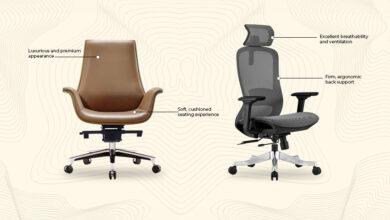Finding the Perfect Furniture Restoration Service Near Me
Looking to breathe new life into your tired furniture? Finding a reliable furniture restoration service near you can be a game-changer, transforming those chipped pieces or dusty antiques into stunning showpieces. This guide explores the options available, highlighting key factors to consider when choosing a restorer, and ultimately helping you find the perfect fit for your needs and budget.
Contents
- 1 Understanding the Value of Furniture Restoration
- 2 Common Furniture Restoration Services Offered
- 3 Identifying the Signs of Needed Furniture Restoration
- 4 Choosing the Right Restorer for Your Needs
- 5 Understanding the Pricing and Cost Factors
- 6 Timeline and Expectations of the Restoration Process
- 7 Specialized Restoration Techniques
- 8 Maintaining Your Restored Furniture
- 9 The Value of a Professionally Restored Piece
- 10 Finding a Restorer Near You
- 11 Understanding the Furniture Restoration Process
- 12 Identifying the Damage and Materials
- 13 Choosing the Right Restoration Method
- 14 Assessing the Budget and Timeline
- 15 The Importance of Quality Materials
- 16 Environmental Considerations
- 17 Protecting the Original Craftsmanship
- 18 Thorough Cleaning and Preparation
- 19 Safeguarding Your Investment
- 20 Final Presentation and Delivery
- 21 Understanding the Furniture Restoration Process
- 22 Factors Affecting Restoration Costs
- 23 Comparing Different Restoration Services
- 24 Preparing Your Furniture for Restoration
- 25 Finding a Reputable Furniture Restorer
- 26 Finding Your Perfect Piece Again
Understanding the Value of Furniture Restoration
Furniture restoration isn’t just about fixing something broken; it’s about breathing new life into cherished pieces. Whether it’s a grand antique or a well-loved family heirloom, restoring furniture often means preserving a piece of history, a connection to the past, and a testament to the craftsmanship of a bygone era. This process goes beyond simply repairing the damage. It’s about recognizing the inherent beauty and unique character each piece possesses. Restoring a piece of furniture is often more satisfying than simply buying new. It’s about embracing the story that piece carries, a story that’s often more valuable than the cost of the material itself. It’s about recognizing the history embedded in the wood grain, the intricate details of the carvings, and the patina that time has bestowed. Beyond the practical benefits of a functional repair, restoration also enhances the aesthetic appeal and increases the overall value of the piece. The expertise of a skilled furniture restorer is invaluable in this process. They are able to meticulously analyze each piece, identify the best restoration techniques, and bring the original beauty back to life in a way that is both authentic and respectful of the piece’s history. This careful consideration is crucial, and the cost of quality restoration reflects this investment in craftsmanship. So, before you toss that antique dresser or broken chair, consider the value of restoration—a value that extends far beyond the material costs.
Common Furniture Restoration Services Offered
Restoration services can vary greatly depending on the type of furniture and the extent of damage. A skilled restoration professional will offer a range of services catering to diverse needs. From simple repairs like patching up scratches or replacing broken components to more intricate work like refinishing antique pieces and replacing worn-out upholstery, they can tackle a wide array of projects. This might include everything from the repair and replacement of broken legs and drawer fronts, to the meticulous sanding and refinishing of old surfaces, and the intricate process of reupholstering antique sofas and chairs. A good restorer will also consider the material of the furniture; from delicate antique woods to sturdier hardwoods, and will use the most appropriate techniques for each. This attention to detail and the selection of the right materials ensure that the restoration is not only effective but also aesthetically pleasing. Furthermore, restorers understand that pieces have varied needs, some requiring careful structural reinforcement while others might only need a fresh coat of paint or a clever replacement of a few worn-out buttons. Quality services will often include consultations to assess the damage, suggest suitable restoration solutions, and provide estimated costs, allowing clients to make informed decisions about the best approach to the restoration of their furniture.
Identifying the Signs of Needed Furniture Restoration
Recognizing when your furniture needs restoration is key to ensuring its longevity and maintaining its value. Sometimes, small imperfections like scratches, dents, or loose hinges can quickly accumulate. Or, it might be a more significant issue like a damaged frame or faded upholstery. Pay close attention to the overall condition of the piece. Is the finish peeling, or are there signs of water damage? Do the drawers stick, or are the legs wobbly? These subtle cues can indicate underlying issues that, if not addressed promptly, can lead to more extensive and costly repairs. Often, the more time passes, the more complex and demanding the restoration becomes, and the initial problems may evolve into significant structural damage, necessitating costly repairs. Proper preventative maintenance, while not a substitute for professional restoration, can extend the lifespan of furniture. By frequently checking for minor damage, you can catch problems early and avoid a more extensive and costly restoration project later on. Don’t ignore the early warning signs; addressing them proactively can save you both time and money.
Choosing the Right Restorer for Your Needs
Finding a reliable and skilled furniture restorer is critical to ensuring a successful outcome. Referrals from friends or family can be a great starting point. Look for reviews and testimonials online, checking for specific experience with the type of furniture you need restored. Look for qualifications, licenses, and insurance information. This will give you confidence in the skillset and the professional ethics of the restorer. Do they have a portfolio of completed projects? Look for examples of similar items restored. This gives you a sense of their style and the quality of their work. When you schedule a consultation, ask about their process, their materials, and their experience working with your particular type of furniture. Ask whether they will provide detailed estimates for the cost and timeframe of the restoration project. A reputable restorer will be happy to provide this information. By meticulously vetting your choices, you can not only ensure the success of your project but also avoid potential disappointments and issues.
Understanding the Pricing and Cost Factors
Furniture restoration costs vary considerably depending on several factors. The type of furniture, the extent of damage, the materials used, and the complexity of the restoration process all influence the final price. Antique furniture, especially if it’s exceptionally rare, will inevitably carry a higher price tag. Furthermore, elaborate or intricate designs, or the unique materials used, can impact the cost of the restoration. The complexity of the restoration itself also plays a significant role. If the restoration project requires intricate repairs or extensive refinishing, this will obviously add to the overall cost. It’s a wise move to compare quotes from several reputable restorers before making a decision. This way, you can be sure you’re getting a fair and competitive price.
Timeline and Expectations of the Restoration Process
The timeframe for furniture restoration projects can vary significantly. Simple repairs can be completed relatively quickly, while more intricate or extensive projects might take several weeks or even months to complete. This depends entirely on the nature of the work. Different stages of the restoration process require specific timeframes, so it’s best to be aware of these factors to avoid any unpleasant surprises. Keeping open communication with your restorer throughout the project is key. They should provide regular updates on the progress and any potential delays. Transparency about the restoration timeline will aid both parties. By managing expectations and keeping the communication lines open, you’ll be able to navigate the restoration process smoothly.
Specialized Restoration Techniques
Furniture restoration often involves a unique combination of traditional and modern techniques. This can include meticulous sanding, cleaning, and repair of wood surfaces, replacement of damaged or worn components, and the detailed application of new finishes. Restorers might employ advanced techniques to match original finishes, ensuring an authentic look and feel. Specific types of furniture require specific restoration techniques. Understanding the proper approach is crucial for achieving a successful outcome. Modern restorative processes might include using specialized adhesives, paints, or refinishing materials. A restorer will carefully consider the age and history of the piece to implement the appropriate restoration process.
Maintaining Your Restored Furniture
Maintaining your newly restored furniture is crucial to preserving its beauty and longevity. This will vary depending on the materials and the specific nature of the restoration work. Some pieces might require specific cleaning methods to avoid damage to newly applied finishes. Regular dusting and gentle cleaning are often sufficient, but some pieces may require a more specialized approach. For example, upholstered furniture might need regular vacuuming or professional cleaning depending on the fabric. It’s important to follow the restorer’s specific recommendations for care and maintenance to ensure your investment lasts. Understanding these tips will help you keep your restored furniture in top condition for years to come.
The Value of a Professionally Restored Piece
A professionally restored piece of furniture is not just a functional item; it’s a valuable investment. It represents more than just material possessions; it’s a statement of appreciation for craftsmanship and history. With proper care and maintenance, restored furniture will likely appreciate in value over time. The restoration process often enhances the piece’s inherent beauty, and the effort invested in restoring it adds to its overall worth. When you appreciate the value of a restored piece, you also gain a connection to its story and the skilled hands that brought it back to life. Beyond its monetary value, the sentimental and historical value can’t be overstated. A restored piece can be a treasured heirloom passed down through generations, a testament to the enduring nature of quality craftsmanship.
Finding a Restorer Near You
Finding a furniture restorer near you is a simple process with a few helpful options. Starting with an online search, using keywords such as "furniture restoration near me," "antique furniture repair near me," or "upholstery repair near me," can lead to relevant local businesses. Look for reviews and testimonials to help you assess the quality of the restorers’ work and the overall reputation. You can also consult local online directories or business listings for restoration services. Utilize social media platforms and groups focused on antiques or home improvement to get recommendations from fellow enthusiasts. Local antique stores or shops specializing in vintage furniture may have recommendations for qualified restorers. Using a combination of these methods can help you quickly locate a qualified and experienced restorer in your area.
Understanding the Furniture Restoration Process
So, you’ve decided your beloved, slightly-tattered antique chair deserves a second life. Fantastic choice! But the whole “furniture restoration” thing might sound a bit daunting. It’s not rocket science, but it’s more than just slapping some fresh paint on it. The process varies significantly depending on the piece, the damage it’s sustained, and the desired outcome. A skilled restorer will carefully assess your furniture, discussing various options with you before starting any work. This initial consultation is crucial, ensuring both you and the restorer are on the same page regarding the desired outcome and budget. Imagine a conversation where you share your love for the piece’s history, highlighting the imperfections you cherish as well as areas needing attention. The restorer will then walk you through the potential restoration methods, explaining the nuances of each approach and the time investment required. This dialogue is vital. They will likely ask questions about the age and origin of the furniture, the material it’s made from, and the specific issues you’d like addressed. This detailed understanding ensures a sustainable and respectful restoration that enhances the piece’s integrity. Ultimately, a good restorer will explain the steps involved, emphasizing the care and attention that goes into bringing old furniture back to its former glory (or a magnificent new glory!).
Identifying the Damage and Materials
Thorough examination is key to a successful restoration. The restorer will meticulously examine the furniture for signs of wear and tear, identifying not just visible damage but also underlying issues like rot, insect infestations, or loose joints. They’ll need to determine the specific type of wood used, the finish applied, and the presence of any decorative elements. A deep understanding of the material is critical. For example, an antique piece might use a type of mahogany with unique properties requiring particular handling. Likewise, the finish – whether it’s lacquer, varnish, or paint – will impact the restoration techniques used. Knowing the materials is important for selecting the right chemicals and products and for avoiding the unintended consequences of improper methods. This detailed evaluation isn’t just about identifying problems; it’s also about appreciating the craftsmanship of the original piece. The restorer might even use tools like a wood grain microscope to gain a deeper understanding of the wood’s characteristics, enhancing the restoration process. This meticulous attention to detail creates the foundation for a superior restoration, and you’ll gain a renewed appreciation for the intricate details of the furniture.
Choosing the Right Restoration Method
Once the damage is understood, the restorer can outline the most suitable approach. This might involve stripping old finishes, repairing cracks, or replacing missing components. In cases of severe damage, the restoration might involve more extensive work, including structural reinforcement. For instance, a weathered antique dresser might require refinishing to restore its original luster. Other pieces might require intricate carving repair or even the application of special pigments to match original stains. Each method has different implications for the piece’s appearance and longevity. Choosing the right method involves understanding the impact on the original craftsmanship and on the item’s aesthetic value. A skillful restorer will consider your preferences, ensuring the outcome is both visually appealing and structurally sound. The choice will also depend on the piece’s value and sentimental importance. Choosing the right method is a balancing act between preserving the piece’s history and bringing it up to a state of excellent condition.
Assessing the Budget and Timeline
A crucial aspect of any restoration project is a realistic budget and timeline. The complexity of the restoration will directly impact the cost. Factors like the extent of damage, the materials required, and the amount of labor involved will all contribute to the final price. It’s wise to discuss the price breakdown upfront. A reputable restorer will provide a detailed quote, outlining all the costs involved in the restoration process. This transparency will allow you to make informed decisions and ensure the project aligns with your budget. Additionally, you should anticipate potential delays; unforeseen complications might emerge during the restoration process. A reliable restorer will manage these effectively and keep you updated throughout the entire process. Establishing a clear timeline from the initial consultation to the final delivery ensures you know what to expect and avoids any unpleasant surprises down the line.
The Importance of Quality Materials
High-quality materials are fundamental to the success and longevity of any restoration. Using inferior materials will only lead to further issues in the future. Restorers who prioritize quality materials use specialized paints, finishes, and glues designed for antique furniture. These materials often come with longer-term warranties or performance guarantees. Choosing materials that match the piece’s original aesthetic is also important. This can involve careful sourcing of specific wood types or even using antique-quality paints. The restorer should be able to explain the rationale behind their material choices, ensuring you understand the commitment to quality in the restoration. Investing in the right materials not only results in a superior finished product but also ensures that the piece remains in excellent condition for years to come.
Environmental Considerations
Modern restoration techniques often incorporate environmentally friendly practices. This involves using low-VOC paints, glues, and finishes that are healthier for both the restorer and the environment. Sustainability is a growing concern for many clients, and choosing a restoration professional who prioritizes these aspects is important. Reputable restorers understand the environmental impact of their work and actively look for ways to minimize their carbon footprint. They may use recycled materials where possible or opt for water-based solutions wherever feasible. These eco-conscious practices demonstrate a commitment to responsible restoration and contribute to a healthier planet.
Protecting the Original Craftsmanship
A good restorer understands the importance of preserving the piece’s original character. They respect the historical value and artistry of the piece, aiming to enhance it rather than fundamentally altering it. The restoration process should never compromise the integrity of the original design or craftsmanship. Sometimes, the most effective approach is to repair or replace only what’s necessary, maintaining the unique character of the item. An experienced restorer will delicately handle the piece, paying close attention to intricate details and using the right tools for each step. This respect for the original craft is essential for preserving the piece’s historical context and aesthetic appeal.
Thorough Cleaning and Preparation
Before any restoration work can begin, the furniture needs thorough cleaning and preparation. This involves removing dirt, dust, and any loose debris. The restorer will also check for signs of insect damage or mold. Thorough cleaning removes potential contaminants and reveals any underlying issues that need attention. This critical first step ensures the restoration process is thorough and doesn’t mask any problems. This is often a painstaking process, requiring specialized cleaning techniques to avoid damaging the piece. The restorer will select the appropriate methods for cleaning and preparing the surface, ensuring a clean slate for the restoration work that will follow. This careful preparation is an integral part of the process, setting the stage for a successful and lasting restoration.
Safeguarding Your Investment
A reputable restorer will protect your furniture throughout the entire process. This often includes using protective coverings to prevent scratches and damage during transport and handling. Restorers should also have adequate insurance to cover any potential accidents. This peace of mind is invaluable when entrusting your prized possessions. The restorer will always communicate clearly about the care and handling of your furniture throughout the project. A skilled restorer also has appropriate safety procedures in place to ensure the work area is organized and safe, safeguarding not only the furniture but also the restorer’s health and well-being.
Final Presentation and Delivery
A well-done restoration is not just about fixing damage; it’s about presenting the piece in the best possible light. The restorer should deliver a fully restored piece with its new shine and polish. They should package the item properly for transport, ensuring it arrives at your home safely and securely. The final presentation should be a reflection of the care and expertise put into the entire restoration process. This should encompass not only a meticulous restoration but also a polished presentation of the piece. A good restorer takes pride in their work and will present your restored furniture with the same care and consideration they put into the restoration itself.
Understanding the Furniture Restoration Process
So, you’ve decided furniture restoration is the way to go. Now, it’s time to understand *how* this process works. It’s not a simple “snap your fingers” solution, and the best results often come from a deep dive into the specific issues with your furniture. First, the restorer will assess the damage. This might include everything from scratches and dents to significant structural problems or signs of insect infestation. They’ll look at the material of the furniture – is it wood, upholstered, or something else? Knowing the type of material dictates the appropriate restoration methods. For example, a scratched wooden chair needs a different approach than a torn-up velvet sofa. They will want to know about the age of the piece, as older furniture might have specific restoration techniques or materials that need to be used with care to preserve its history. The restorer might also consult with you to understand your preferences – do you want a complete overhaul or just touchups? This isn’t just about fixing the issue; it’s about enhancing the piece to its best, original, or even improved condition. The process might include repairs, refinishing, reupholstering, or a combination of these methods, each with careful considerations for the piece’s history and intended use. Communication is key. A good restorer will keep you in the loop throughout the process, offering options and explaining their choices.
Factors Affecting Restoration Costs
Pricing for furniture restoration is never a one-size-fits-all deal. Several factors play a significant role in determining the total cost. The complexity of the restoration job is probably the biggest factor. A simple scratch repair is going to cost much less than a complete reupholstering job on an antique sofa, or fixing structural issues within the furniture. The amount of work involved dictates the time spent and the necessary materials. Think of it like building something – a small repair might take a fraction of the time it takes for a large construction project. The condition of the furniture itself also plays a role. If your favorite chair has extensive damage or decay, the repair work may take longer and require more materials, driving up the cost. The type of materials used – whether it’s a high-end leather or a common fabric – also impacts pricing. Likewise, the cost of labor varies based on the restorer’s experience and reputation. A well-established professional will likely have higher rates than someone just starting out. Finally, location and demand also play a part in the overall cost. A very busy or sought-after restorer in a high-cost area might charge more than a restorer in a less populated location. To get an accurate quote, it’s essential to discuss your specific needs with a restoration professional.
Comparing Different Restoration Services
Different restoration services have different strengths and weaknesses. A specialist in wood restoration might not be the best choice for reupholstering a delicate armchair. It’s worthwhile to explore the various services available to find the best fit for your project. Here’s a quick comparison:
| Restoration Service | Strengths | Weaknesses |
|---|---|---|
| Wood Restoration | Experts in refinishing, repairing, and restoring the beauty of antique or vintage pieces. Often handle intricate carvings and repairs. | Might not be well-equipped to tackle upholstery or other materials. |
| Upholstery Restoration | Specialists in rejuvenating and replacing fabric or leather coverings on furniture. This can often bring a sofa or chair back to life, even if damaged. | May not have the expertise to handle wood repairs or complex structural issues. |
| Antique Restoration | Preserve the historical significance and craftsmanship of antiques, often using specialist techniques. | Might take more time and cost significantly more, depending on the complexity and age of the piece. |
| General Furniture Restoration | Often equipped to handle a wider range of furniture types and damages, including wood, upholstery, and general repair needs. | Could lack the expertise or specific techniques needed for highly specialized projects. |
| Refinishing | Can transform the look of furniture by adding a fresh layer of paint or varnish. Perfect for updating older items to match a new décor. | May not be the best solution for damaged or structurally unsound furniture. |
Understanding these distinctions can help you select the right specialist for your needs.
Preparing Your Furniture for Restoration
Before you even think about calling a furniture restorer, there’s some pre-work you can do to ensure a smooth and successful restoration process. First, evaluate the damage to the furniture. Is it a minor scratch, or is it a major structural flaw? Identify the extent of the damage and note down any specific issues. Take pictures of the damage for reference. Removing any loose debris or dust from the furniture is vital, as this can interfere with the restorer’s assessment and potentially cause further damage. Ensure the item is clean and clear for the restorer to evaluate. Proper preparation will help to ensure a successful outcome and avoid misunderstandings during the process. Communicate any special requests or wishes you have with the restorer – do you want a specific color, fabric, or finish? Clear communication from the outset will help them understand your expectations and create the furniture of your dreams. Don’t be afraid to ask questions – a good restorer will be happy to discuss your options and provide expert advice.
Finding a Reputable Furniture Restorer
Finding a reliable furniture restorer can be a challenging but rewarding experience. Look for restorers with a proven track record and positive reviews. Word-of-mouth referrals from friends or family can be invaluable. Check online reviews on reputable platforms to see what other customers have said. Look for specialists in the specific type of furniture you need restored. If you’re dealing with antiques, look for someone with experience in antique restoration. Don’t just rely on the cheapest quote; consider the skills and experience of the restorer. A qualified and skilled restorer will not only get the job done efficiently but will also ensure the longevity of your furniture. By taking your time and doing thorough research, you can find the perfect restorer for your needs, ensuring your cherished furniture gets the care it deserves. Inquire about their experience with different materials, techniques, and restoration styles to ensure they are well-suited to handle your specific requirements.
Finding Your Perfect Piece Again
Well, there you have it! Hopefully, this article has given you some great starting points for finding a fantastic furniture restorer near you. It’s a rewarding experience, bringing old treasures back to life. Thanks for reading, and we hope to see you back here again soon for more home improvement tips and inspiration. Happy restoring!









